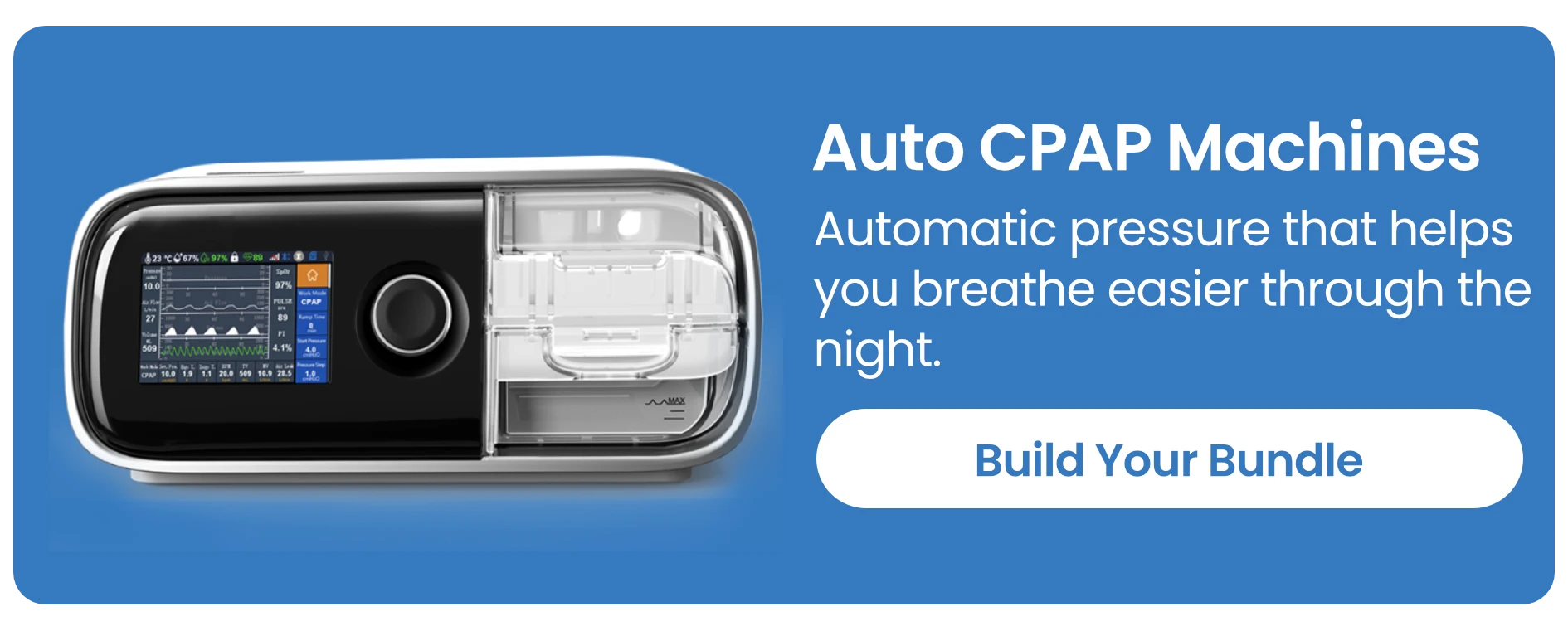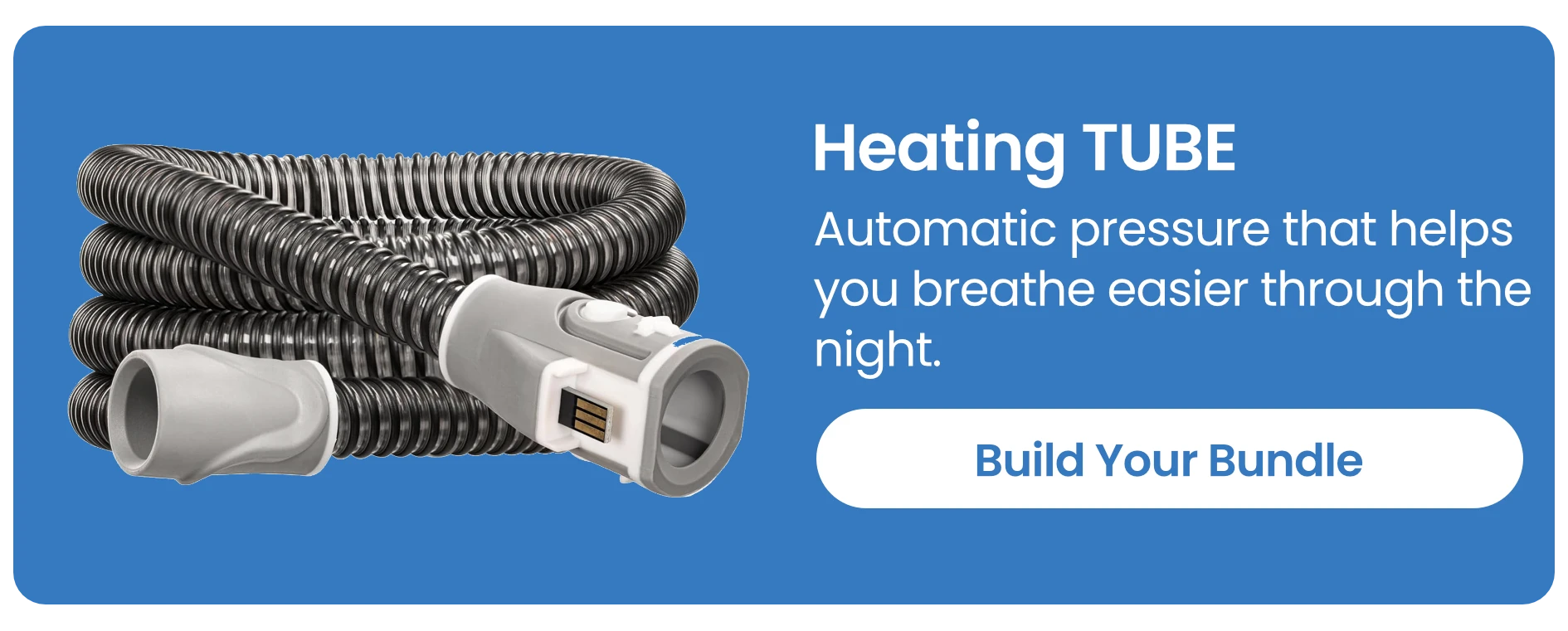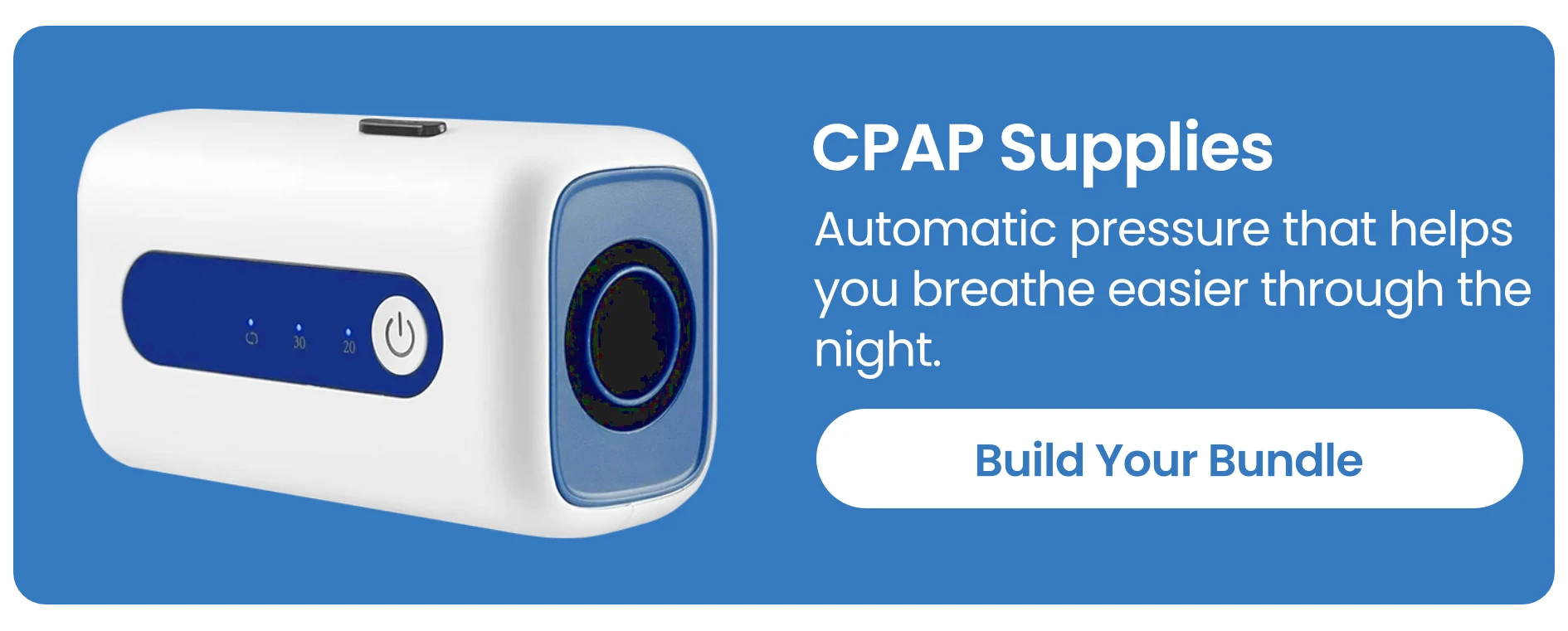Can Sleep Apnea Trigger Bad Breath, Nightmares, and Morning Headaches?
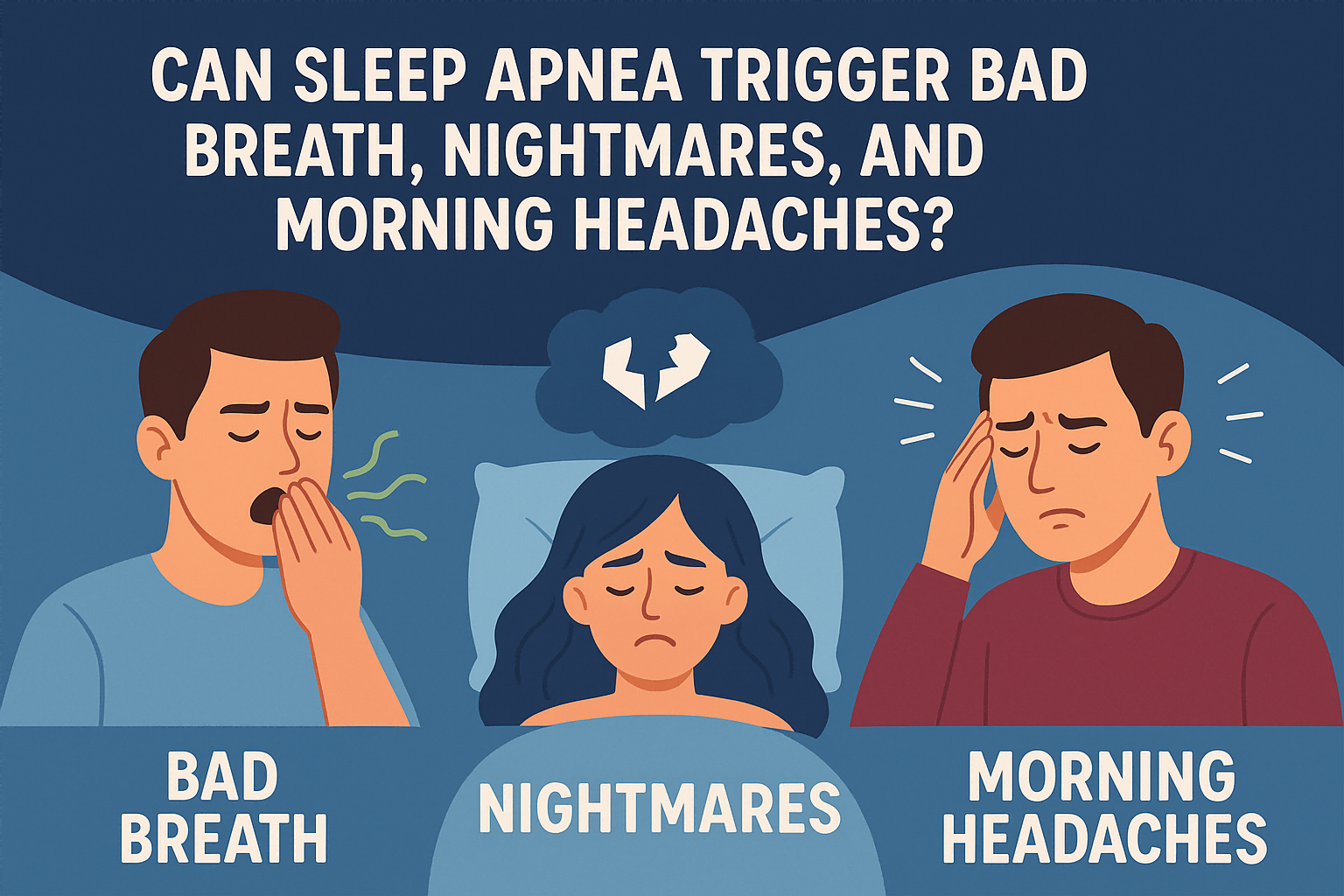
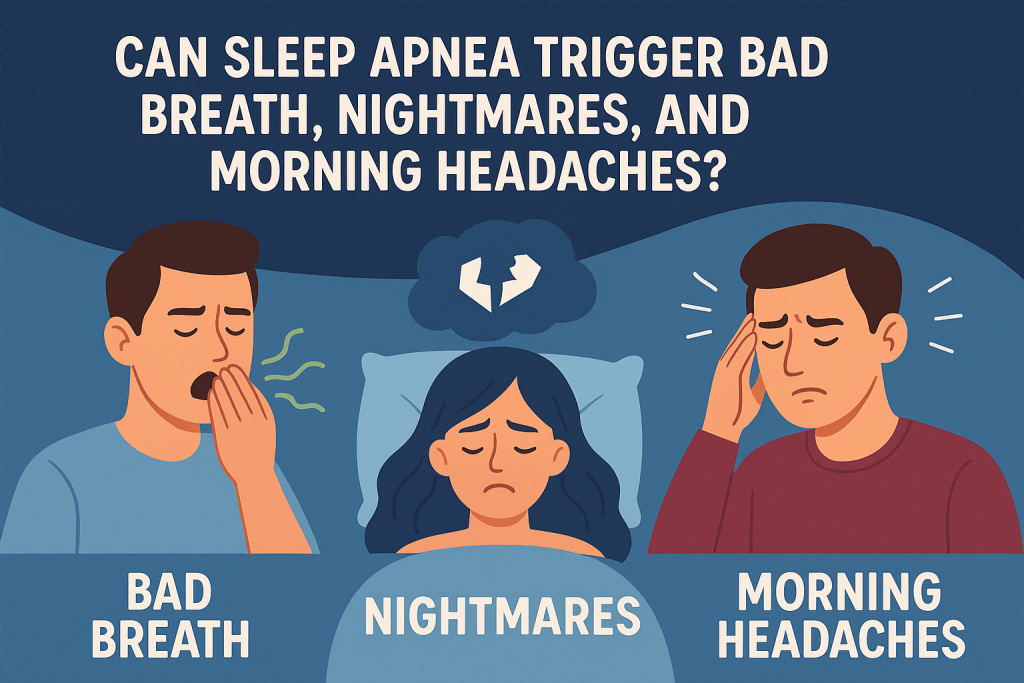
Sleep apnea is more than just loud snoring and restless nights—it can be a hidden culprit behind bad breath, unsettling nightmares, and persistent morning headaches. While most people associate sleep apnea with breathing interruptions, its impact extends far deeper, affecting oral health, mental well-being, and neurological functions.
In this guide, we’ll explore the science behind these connections, who’s at risk, and what you can do to reclaim restful, refreshing sleep.
Understanding Sleep Apnea: What It Really Is
Sleep apnea is a sleep disorder characterized by repeated pauses in breathing during the night. These pauses can last for seconds or even minutes, causing the brain and body to struggle for oxygen. Over time, these interruptions affect not just sleep quality but also overall health.
Types of Sleep Apnea (Obstructive, Central, Complex)
- Obstructive Sleep Apnea (OSA): The most common form, caused by blocked airflow due to relaxed throat muscles.
- Central Sleep Apnea (CSA): Occurs when the brain fails to send proper breathing signals.
- Complex Sleep Apnea: A combination of both OSA and CSA.
How Sleep Apnea Affects Breathing During Sleep
When airflow is blocked or disrupted, oxygen levels drop, and carbon dioxide rises. The body jolts awake—sometimes subtly, sometimes dramatically—breaking natural sleep cycles. This constant cycle of “wake and sleep” sets the stage for issues like bad breath, nightmares, and morning headaches.
The Link Between Sleep Apnea and Oral Health
Can Sleep Apnea Cause Bad Breath?
Yes. Many patients with sleep apnea wake up with chronic halitosis (bad breath). The root cause often lies in dry mouth, a common side effect of disrupted breathing.
The Role of Dry Mouth in Halitosis
When airflow is blocked, people often breathe through their mouths at night. This dries out saliva, which normally helps wash away bacteria. Without it, foul-smelling bacteria multiply, causing bad morning breath.
Bacterial Growth and Oxygen Deprivation
Oxygen restriction in the mouth can fuel bacteria growth. Over time, these bacteria produce sulfur compounds, making bad breath worse.
Long-Term Effects on Dental and Gum Health
If left untreated, sleep apnea can increase risks of:
- Gum disease (periodontitis)
- Tooth decay
- Mouth ulcers
- Chronic infections
Nightmares and Sleep Apnea: A Hidden Connection
How Interrupted Breathing Affects Dream Cycles
Dreams occur during REM sleep, but sleep apnea constantly interrupts this stage. As a result, patients often experience disturbing or vivid nightmares linked to oxygen deprivation.
The Role of REM Sleep and Emotional Health
REM sleep is essential for processing emotions. Lack of it can lead to increased anxiety, heightened stress, and an overactive dream cycle—sometimes filled with nightmares of suffocation or drowning.
Why Sleep Apnea Patients Report Vivid Nightmares
Studies show that apnea patients are more likely to recall nightmares because frequent awakenings occur during dream phases. This creates a stronger memory imprint compared to normal sleepers.
Morning Headaches and Sleep Apnea
Reduced Oxygen and Increased Carbon Dioxide Levels
When oxygen levels drop, blood vessels in the brain dilate, leading to pressure and pain. This often results in tension-like or migraine-like headaches upon waking.
The Role of Sleep Fragmentation
Broken sleep cycles mean the brain never gets fully restorative rest. This imbalance often triggers headaches that persist through the day.
Migraines vs. Sleep Apnea-Related Headaches
Unlike migraines, which are often one-sided and throbbing, sleep apnea headaches tend to be:
- Felt on both sides
- Dull and constant
- Short-lived (usually easing within hours after waking)
Who Is Most at Risk for These Symptoms?
While sleep apnea can affect anyone, certain groups are more likely to experience bad breath, nightmares, and morning headaches as a result of the condition.
Obesity and Lifestyle Factors
Excess weight, especially around the neck, can restrict airflow, making obstructive sleep apnea more common. Poor diet and lack of exercise also contribute to higher risk levels.
Age, Gender, and Genetic Influences
- Age: Sleep apnea is more prevalent in people over 40.
- Gender: Men are twice as likely to develop it, though women’s risk rises after menopause.
- Genetics: A family history of sleep apnea, narrow airways, or enlarged tonsils can predispose individuals.
Smoking, Alcohol, and Medication Triggers
- Smoking: Increases airway inflammation, worsening apnea.
- Alcohol: Relaxes throat muscles, increasing breathing pauses.
- Sedatives/medications: Can further suppress normal breathing patterns.
Diagnosing Sleep Apnea and Associated Symptoms
Early detection is crucial. Many people live with untreated sleep apnea for years, blaming their symptoms on stress or poor sleep habits.
Common Diagnostic Tests (Polysomnography, Home Sleep Test)
- Polysomnography (PSG): A full overnight sleep study in a clinic, monitoring brain waves, oxygen levels, and breathing.
- Home Sleep Apnea Test (HSAT): A simplified version that patients can do at home, often recommended for moderate to severe cases.
How Dentists and Sleep Specialists Work Together
Dentists often notice oral signs like tooth grinding, gum disease, or jaw misalignment—all linked to sleep apnea. When combined with a sleep specialist’s evaluation, this multidisciplinary approach ensures more accurate diagnosis and treatment.
Treatment Options That Improve Sleep and Reduce Symptoms
The good news is, treating sleep apnea not only improves breathing but also reduces bad breath, nightmares, and morning headaches.
CPAP Therapy and Its Benefits
The Continuous Positive Airway Pressure (CPAP) machine is the gold standard for sleep apnea treatment. It:
- Keeps airways open
- Reduces oxygen deprivation
- Prevents morning headaches and nightmares
- Improves energy and mood
Oral Appliances for Better Airflow
Custom-fitted devices, made by dentists, reposition the jaw or tongue to keep the airway open. These are ideal for patients who cannot tolerate CPAP.
Lifestyle Changes That Make a Difference
- Losing weight
- Sleeping on your side instead of your back
- Reducing alcohol and smoking
- Practicing regular exercise and breathing exercises
Prevention and Self-Care Strategies
Even if you’re at risk, preventive care can reduce symptoms and improve sleep quality.
Healthy Sleep Hygiene Practices
- Maintain a consistent bedtime and wake-up time
- Avoid heavy meals before bed
- Keep your bedroom dark, quiet, and cool
Dietary and Breathing Exercises
- Reduce sugar and processed foods that increase inflammation
- Practice yoga or deep-breathing exercises to strengthen respiratory muscles
When to Seek Professional Help
If you notice persistent morning headaches, worsening bad breath, or frequent nightmares, it’s time to consult a sleep specialist. Early treatment prevents complications like high blood pressure, diabetes, and cardiovascular disease.
FAQs on Sleep Apnea, Bad Breath, Nightmares, and Headaches
1. Can sleep apnea really cause bad breath?
Yes. Mouth breathing and dry mouth, common in sleep apnea, create an environment for bacteria that cause foul odors.
2. Why do people with sleep apnea often have nightmares?
Interrupted REM sleep due to oxygen deprivation increases the likelihood of vivid, unsettling dreams.
3. Are morning headaches a warning sign of sleep apnea?
Absolutely. They’re linked to low oxygen and high carbon dioxide levels during the night.
4. Can treating sleep apnea cure bad breath permanently?
Treating sleep apnea can significantly improve bad breath, but good oral hygiene is also necessary.
5. Is CPAP the only solution for sleep apnea?
No. Oral appliances, lifestyle changes, and in some cases surgery can be effective alternatives.
6. Can children develop sleep apnea with similar symptoms?
Yes. Enlarged tonsils and adenoids often cause sleep apnea in children, leading to restless sleep, headaches, and irritability.
Conclusion: Managing Sleep Apnea for a Healthier Life
So, can sleep apnea trigger bad breath, nightmares, and morning headaches? The answer is a resounding yes. These symptoms are not isolated but deeply connected to how sleep apnea disrupts breathing, oxygen flow, and restorative sleep cycles.
The good news? With proper diagnosis and treatment—whether through CPAP, oral appliances, or lifestyle changes—you can dramatically reduce these symptoms and restore restful sleep.
Ignoring sleep apnea not only affects your mornings but your long-term health. By addressing it early, you’ll wake up fresher, breathe easier, and say goodbye to those unwanted side effects.
For more detailed information on sleep apnea and treatments, you can visit the American Academy of Sleep Medicine: https://aasm.org
✅ Final Takeaway: Sleep apnea is more than just snoring—it’s a silent disruptor of health. But with awareness, diagnosis, and treatment, you can reclaim control of your nights and mornings.







